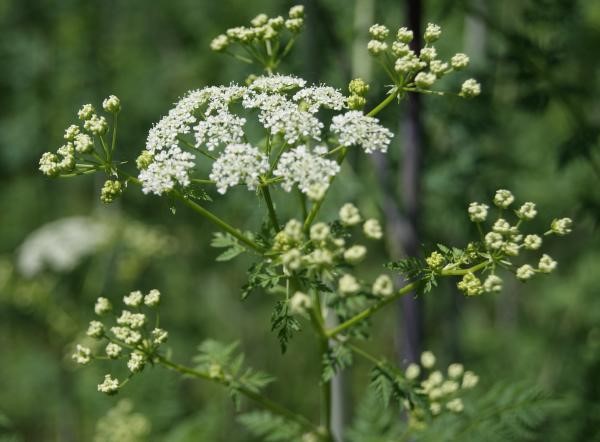Weed commissioner warns poison hemlock is near cattle grazing ground
June 14th, 2024 by Ric Hanson
(Radio Iowa)- The weed commissioner in a northern Iowa county is sounding the alarm after discovering a toxic plant at two sites that could pose a threat to livestock. Hancock County Weed Commissioner Jason Lackore (luh-COR) found poison hemlock at the yard waste dump in Garner last week.) “It’s really dangerous,” Lackore says. “…It can kill you.”
Last year, Lackore found the poisonous plant at Eagle Lake Nature Area near Britt after some work was done on a drainage ditch. “I’m guessing that contractor came from a county where hemlock is present and brought it here,” Lackore says. Both sites where the plant has been found are in public areas, which Lackore says is a big concern. “If it was any other plant, I wouldn’t be making such a fuss, but this plant — all parts are extremely poisonous to humans, domestic animals,” Lackore says. “And you hear a lot about livestock, cattle, ingesting small amounts. It’s fatal.”

Poisonous Hemlock (Iowa State University Extension Service photo)
According to the U-S-D-A, cattle can die after eating very small amounts of green or dried poison hemlock. Lackore says the site near Britt where he found poison hemlock is upstream from a major wetland complex where cattle are grazing. “At the other site, the plant is also upstream from a major river and drainage ditches and there are several cattle producers in that area just downstream where their cattle graze, pasture in these streams, in this major river where this plant is going to be traveling to,” Lackore says, “and that’s not going to be good.”
Poison hemlock, which starts growing in the early spring, has clusters of white flowers that develop into a green, ridged fruit that contains seeds. It’s most dangerous to livestock and pets. However, humans can be poisoned if they accidentally ingest poison hemlock. Symptoms include vomiting, seizures and respiratory failure. Poison hemlock was brought to the United States in the 1800s as a flowering plant for gardens. According to the U-S-D-A, it has spread to every state BUT Hawaii.





